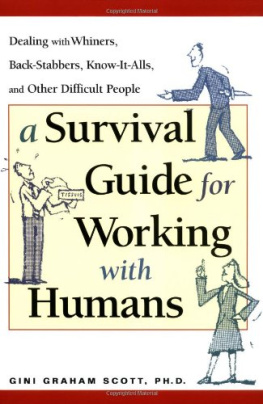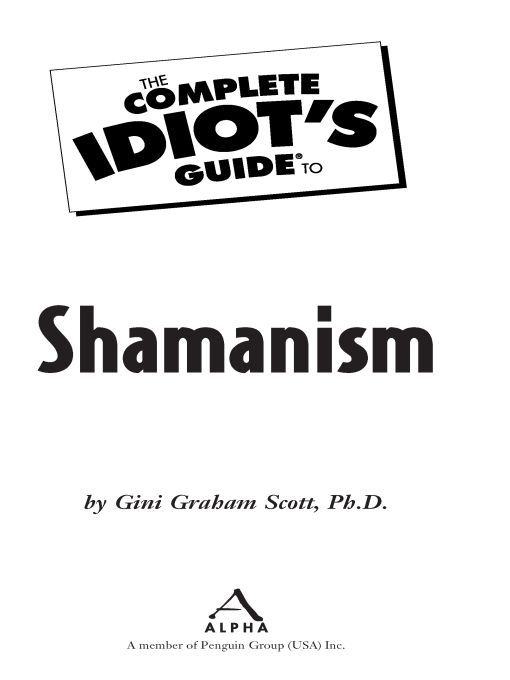Table of Contents
To the traditional shamans; may they never be forgotten.
Foreword
When European explorers first encountered shamans, they were shocked. Their letters back home described them as uncivilized savages who were doing the work of the devil. Religious authorities attempted to convert them, and if they objected, shamans often found themselves tortured, burned at the stake, or skinned alive. But shamanism survived. The colonial governments banned shamanic rituals, dances, and music. Colonial families were forbidden to see shamans or use shamanic herbal remedies. Frequently, missionaries took native children away from their parents and from their pagan practices. But still shamanism survived. When Western psychology and psychiatry turned its attention to shamanism, experts in psychopathology diagnosed shamans as schizophrenic, hysterical, or severely neurotic. It was assumed that enlightened tribal members would soon realize the folly of following the old superstitions. But shamanism still survived.
Finally, shamanism is being taken seriously again, and Gini Scott has written several pioneering books on shamanic practices and their relevance to contemporary life issues. Contemporary social scientists describe shamanism as a body of techniques and activities that enable its practitioners to obtain information not ordinarily attainable by members of their social group. Shamans use this information to meet the needs of their community and its individual members. Originally, shamans were active in hunting, gathering, and fishing tribes, and this is where they can be found in their most unadulterated form. However, contemporary shamanic practitioners also exist in nomadic, agricultural, and even urban societies.
Shamanism takes on different forms wherever it is found. Sometimes a community may recognize several types of shamans. Among the Gold Eskimos, only the siurku shaman is allowed to heal, while the nyemanti shaman performs special rituals over a deceased persons soul after his or her death, and the kasati shaman conveys the soul of the deceased to the spirit world. When I visited the Cuna Indians of Panama, I was told that the abisua shaman heals by singing, the inaduledi specializes in herbal cures, and the nele focuses on diagnosis.
Readers of this remarkable book will learn how to work with power animals, how to initiate rituals, and how to use their imagination to take shamanic journeys. This is not a shamanic cookbook; shamans undergo years, sometimes decades, of tests and trials before their community gives them shamanic status. However, Gini Scott has given her readers an inspiring account of the shamanic process. Every shamanic tradition is different, and every reader of this book is a unique individual. The information and exercises in this book will motivate its readers in diverse ways. But this diversity and variety has always been at the very roots of shamanism.
Stanley Krippner
Stanley Krippner, Ph.D., is professor of psychology at Saybrook Graduate School in San Francisco. He has worked with shamans from six continents, and is the co-author of Exceptional Dreams and The Mythic Path. His co-edited book, Varieties of Anomalous Experience, was published by the American Psychological Association, which gave him their award for Distinguished Contributions to the International Advancement of Psychology in 2002.
Introduction
I have long been intrigued by one of the oldest skills in the world for gaining knowledge and healingshamanismwhich I first encountered in 1980 while I was studying the growing interest in spiritual growth, alternative religions, and humanistic/transpersonal psychology in California in the late 1970s and early 1980s. I had already spent a decade going to assorted workshops and seminars on altered states of consciousness, hypnosis, and dreaming, including at Esalen, a thriving Big Sur retreat center at the heart of this movement, and had studied some of the new spiritual growth, pagan, and Wiccan groups. I first learned about shamanism from an adventure travel brochure. It featured a group trip to Ecuador, led by anthropologist Joan Halifax, to meet with shamans and other traditional healers. In Ecuador, we visited four different shamans, two located deep in the Amazon jungle, one in the central city of Quito, and another on the coast. One night we even took part in an all-night healing ceremony, which included ritual drinks of ayahuasca, a powerful hallucinogenic drink made from a brew of jungle vines.
My interest in shamanism goes well beyond a social scientists academic interest, though. A few years after my return from Ecuador, I met a shaman who had drawn on a number of shamanic traditions and practices to create the Order of the Divine Flame, then based in Los Angeles. I soon became one of a small group of his students in the San Francisco Bay Area. Frequently, we went out into naturefrom local parks to the nearby beaches and mountainsto work with the elements of nature and call on the spirits.
Eventually I adapted some of these techniques for everyday self-help and personal and professional development. I combined them with visualization and mental imaging techniques I had previously written about (Mind Power; The Empowered Mind) to create workshops and write books (Shaman Warrior, Secrets of the Shaman, Shamanism for Everyone, and Shamanism for Personal Mastery) to help others learn how to use shamanic practices for their own empowerment and personal mastery. In retrospect, I would describe what I was doing as part of the modern stream of popular shamanism, where we were using shamanic practices, rather than actually being shamans as the term is usually used to describe traditional healers. But at the time, I didnt make such distinctions, and the modern shamanism movement was too new to understand these developments.
The term shamanism, as youll discover, has many meanings. In its most traditional form, shamanism is the practice of entering into an altered state of consciousness to contact the spirits to help and heal others. The original shamans were healers and counselors in small hunting-gathering, pastoral, and agricultural villages. In the last few decades, though, shamanism has undergone numerous changes, as its practices have been adopted by psychologists, medical practitioners, and by those, including myself, involved in various combinations of New Age practices, humanistic psychology, and business, educational, and personal development.
This book is intended to provide you with a broad understanding of shamanism today and how you can use it in your own life. I start with an overview of the nature of shamanism and how it has developed. Then, I look at how you can apply it to your own life, focusing on the use of journeying, self-understanding, personal and professional development, and everyday guidance. Because the use of shamanism for healing is more specialized, I dont delve too deeply into that area, though I provide an overview of it, should you be interested in seeking more guidance.
After reading this book, you will be able to use shamanic practices in your everyday life to increase your awareness, make better decisions, improve your skills, and otherwise attain empowerment.
How This Book Is Organized
This book is designed for both the newcomer to shamanism and the person already familiar with it who wants to know more. Feel free to skip to those sections that are most of interest to you, whether thats the early chapters on the nature of shamanism and how it developed or on how to apply shamanic practices to your daily life.















